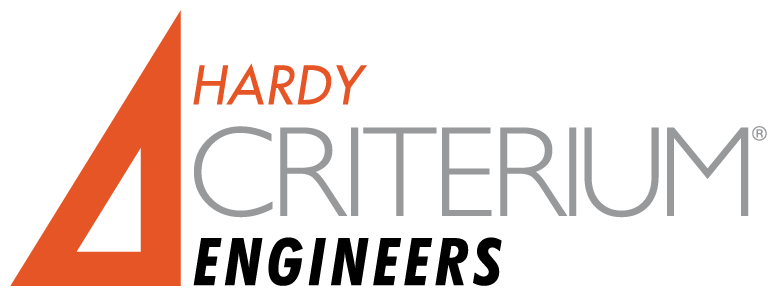You are a board president and you just found out that your association needs $200,000 to replace the clubhouse HVAC system. Your operating budget has no contingency funds and your reserve fund (which only gets occasional contributions) only has a balance of $50,000. What do you do now? No one wants to be in such a situation, but without a good, independent reserve fund study, you are at risk.While the importance of associations building and maintaining a strong Reserve fund is no mystery, raising fees or special assessments is often a sensitive subject with homeowners. Every association needs a long-term planning tool, and a reserve fund study provides a schedule and budget for funding those non-annual, predictable expenses.
FIDUCIARY RESPONSIBILITY
One of the primary business duties of community associations is maintaining and preserving property values of the associations’ common property. To do this properly, associations must develop funding plans for future repair or replacement of major common-area components.
A reserve study is a budget planning tool that identifies the current status of the reserve fund and establishes a stable and equitable funding plan to offset the anticipated future major common-area expenditures. Being prepared for non-annual expenses allows your association to change the unexpected to the expected.
Reserve fund studies are one of the best tools for financial and physical health available to an association. Having a reserve fund study prepared by an independent, qualified consultant also demonstrates a good faith effort by the board to respond to their fiduciary responsibility.
For accuracy and credibility (and defendability), a reserve fund study should be updated (with a site visit) every three or four years. Each state has different requirements regarding the frequency of full studies and updates.
COMMUNICATION AND RELATIONSHIPS
Reserve fund Studies may discover that additional funds are needed to offset projected future expense. That’s when the board’s ability to deliver that information effectively can be challenging
It is our belief that fundamental to meeting that challenge is two basic premises: communication and relationships. Communication is multi-faceted – between the board and the owners, between the board (and/or subcommittee) and the consultant, and between the consultant and the owners. To ignore these opportunities for effective communication will result in diluting the effectiveness and ultimate success of the implementation of any reserve fund study for your association.
Relationship nurtures trust and confidence. Through effective communication, greater trust and confidence can be developed between the various parties involved. As a result, it is more likely (although certainly not guaranteed) that the recommendations of a reserve fund study can be effectively implemented.
The Board should maintain open communications with the association members. With Zoom meetings and the internet, ongoing communication is easier than ever. And CAI provide good information about the purpose and best practices for a reserve fund study. Helping owners understand a reserve fund is important.
AN OUTLINE FOR SUCCESS
It is imperative that the scope of a reserve study be clearly defined before even seeking proposals from consultants. The following are a variety of options to be included in the scope of any request for proposals:
Define the project
Define exactly what is expected of the consultant. This should be as a result of discussion by the board and/or building subcommittee to determine what is needed. It is particularly important to decide whether the reserve study is to be based on simply replacing existing components or if upgrades and improvements should be considered. As our buildings and owners age, priorities from the common areas may change.
Interview the consultant
Getting to know the consultant, the people involved on your project and their approach to the project is imperative to a successful relationship. The RFP should include a paragraph such as follows below.
The board will select two to three consultants it believes to be qualified for the work and then conduct interviews, either in person, by video conferencing or by conference call. The objective of the interview is to meet the people who will be specifically working on our project, discuss a variety of questions, and generally understand the procedures the consultant intends to use for the project. A final choice will be made within one week following the interviews.
A reserve study provider’s objectives are threefold:
To provide a broad perspective on reserve studies; to assist property managers with a successful presentation of reserve fund studies; and to create opportunities for more meaningful reserve studies and effective implementation of recommendations. To accomplish that, we suggest the following steps
Pre-project meeting
The board (or building subcommittee) should meet with the consultant before actual work starts. The objective is to refine and finalize the scope of the project, discuss any specific concerns and review the asset list. This is also an opportunity to determine what will be expected of the association (or management company) and what will be expected of the consultant throughout the project. Suggested language for the RFP is as follows:
The first step after selection is a meeting with the board (building subcommittee) to review, refine, and finalize the scope of this project. At that time, the items to be covered, the procedures involved, the on-site protocol to be used by the consultant, and any special concerns of the board (building subcommittee) will be discussed.
Conduct an owner survey
The intent is to give all of the owners the opportunity to express any particular concerns they might have about the project.
While this may seem risky, it has been our experience that it is actually quite effective. Such a survey would be accompanied by a letter from the association providing all of the owners with the scope and limitations of the reserve study to be conducted and encouraging them to respond to the survey. It has been our experience that there is a very high percentage of response. Often the response to these surveys will reveal patterns that relate to association responsibilities as well as giving owners the opportunity to note areas of concern.
The content of the survey should be reviewed and modified for each specific project. Also, a letter should be distributed to the unit owners, along with the survey, explaining the purpose and logistics of the reserve study and the survey. That letter should be on the association stationery. The survey would be on the consultant’s stationery. The following is text for the RFP relative to this point:
The consultant is expected to participate in at least one meeting with the board (building subcommittee) prior to commencement of the project.
The consultant is expected to distribute a survey for use by all unit owners and compile the results of that survey as a part of the reserve fund study.
The final report would include a summary of the survey findings as well as any specific recommendations or observations related to the survey.
Follow-up meetings
It is important that the consultant be willing to discuss the findings of the study with the directors, building subcommittee, and unit owners.
This is especially important if the study includes an evaluation of upgrades and improvements. Ideally, there will have been ongoing communication with the directors (building subcommittee) throughout the study process. A meeting with the unit owners will be a logical extension of that process. The following is language to be used in an RFP for that purpose:
The consultant is expected to attend at least one meeting to which all of the unit owners are invited. This will occur after submittal and acceptance of the final report. The consultant will be expected to provide an overview of their findings and to respond to questions from the unit owners.
Report format
Effective communication means effective distribution of information.
The consultant’s report should be well organized and well written. Since most state laws require that the reserve fund study be made available for all owners clear graphics, photos and tables are recommended. Further, the report should be compatible with electronic distribution. Be sure to call this out in the RFP:
The consultant will provide final report in electronic format. This will include photographs highlighting areas of concern and/or special interest.
Review draft report
For the association, directors, and building subcommittee to be comfortable with the work of the consultant, it is important that there be interaction throughout the process.
Generally, we recommend that the consultants meet with the directors/building subcommittee regularly throughout the process of developing the study and submit a draft report for review and comment by the directors/building subcommittee. The RFP should include the following language: The consultant will provide a draft report in electronic format for review by the board (building subcommittee). The board (building subcommittee) will provide comments within two weeks of receipt of the draft report. Following that, the consultant will provide its final report.
Now That You Have the Results, Where Do You Go From Here?
In the first half of this article, we discussed reserve studies and selling the results of the report to your association (without a revolt!). Now that you have the association on board with the report, how do you go about implementing the actual findings?
Tom Landry, the legendary head coach for the Dallas Cowboys, said, “Setting a goal is not the main thing; it is how you will go about achieving it and staying within that plan.” This applies to associations as well: implementing a reserve study properly is as important as obtaining a quality study to begin with.
A reserve fund plan will outline where your association currently stands financially, and the next steps to maintain adequate funding. By providing your association with comprehensive inventory of all common elements and an in-depth analysis to dictate your community’s maintenance standards, the final report will greatly assist your association in reaching maintaining financial stability.
Elements of the Study
A reserve study consists of two elements: physical analysis (condition assessment) and financial analysis (fund status and funding plan). The physical analysis, which should always result from a minimum of one site visit and meeting with the board of directors, produces a detailed reserve component (or asset) list for your community. This component list will inventory the association’s common elements and the remaining useful life (RUL) of each one.
The financial analysis documents the current reserve fund balance, current rate of contributions and projects annual balances based on projected expenses. The objective is to be sure the balance remains positive (or a board determined minimum threshold) as monies are spent. We recommend the cash flow method for funding projections, it’s practical and easy to understand. Some consultants will offer component funding.
Funding Plan Considerations
The funding plan serves a measure of your current condition and as a road map for the future. While you may be tempted to look only at the bottom line and determine what your association’s monthly reserve dues will be, individual features such as the inflation factor and replacement cost cannot be ignored. To ensure a sound budget throughout the years, each piece of the reserve fund puzzle must work together.
The funding plan will recommend a monthly reserve contribution, which is the amount each homeowner will pay in monthly dues (or quarterly, depending on your particular association) to the reserve fund only. The assessments are based on the funding plan developed to take your current reserve account to the funding objective. If your association currently has a weak account (or none at all), the reserve dues will naturally be higher than those associations with well-funded reserve accounts. Using the cash flow method, owners will pay dues to the reserve fund, designed to offset the annual expenditures from the reserve fund.
If your community doesn’t have a reserve fund in place, and you have cash needs, you should start the fund immediately and defer expenses where you can. A modest first payment in excess of the normal monthly payment will help get you started.
Along the same lines, securing a loan from a bank that specializes in community associations is another option that is growing in use. This can be a good alternative for associations who are drastically under-funded but don’t want to impose a special assessment on the homeowners. Planning ahead and making regular contributions to the reserve fund will reduce the risk of such a loan.
A special assessment may be necessary for associations that need the money relatively quickly, particularly in the case of an emergency, and don’t want to go through a bank to obtain a loan (and therefore, pay interest). This can be an unpopular choice with the residents of your community. A special assessment can l can be a one-time payment or installments, depending on the need and urgency. A well-managed association with reasonable reserve planning should work to avoid a special assessment.
Ongoing Maintenance & Updates
Based on your starting reserve balance, the final step is to establish a preventive maintenance program. This is different than a reserve funding plan. If your association does not maintain the components as detailed in the report, you run the risk of putting your association much farther behind in both maintenance and reserve funding.
Additionally, updates to the reserve study should be performed every three to five years. Changes to the association inventory, inflation significant weather events, and updating the RUL are just a few of the factors that can change the original reserve projections.
A quality reserve study performed by a Professional Engineer is the ideal way to continue planning for future repairs and improvements
All common assets of your association can successfully be maintained with advance planning. Stable budgets and an aesthetically pleasing property will keep homeowners content and ensure a stable budget, all while attracting new homeowners.
Reserve studies contain an evaluation of property condition, and most importantly, serve as an indispensable tool in projecting costs and managing reserve accounts. Major expenses are inevitable, these can often be headed off with advance preparation. Reserve studies have the unique effect of allowing you to peek into the future to ensure you plan appropriately today.
Article written by H. Alan Mooney, P.E., RS, Criterium Engineers
Published in Condo Media January 2021 edition
Download a copy of this Condo Media Article






